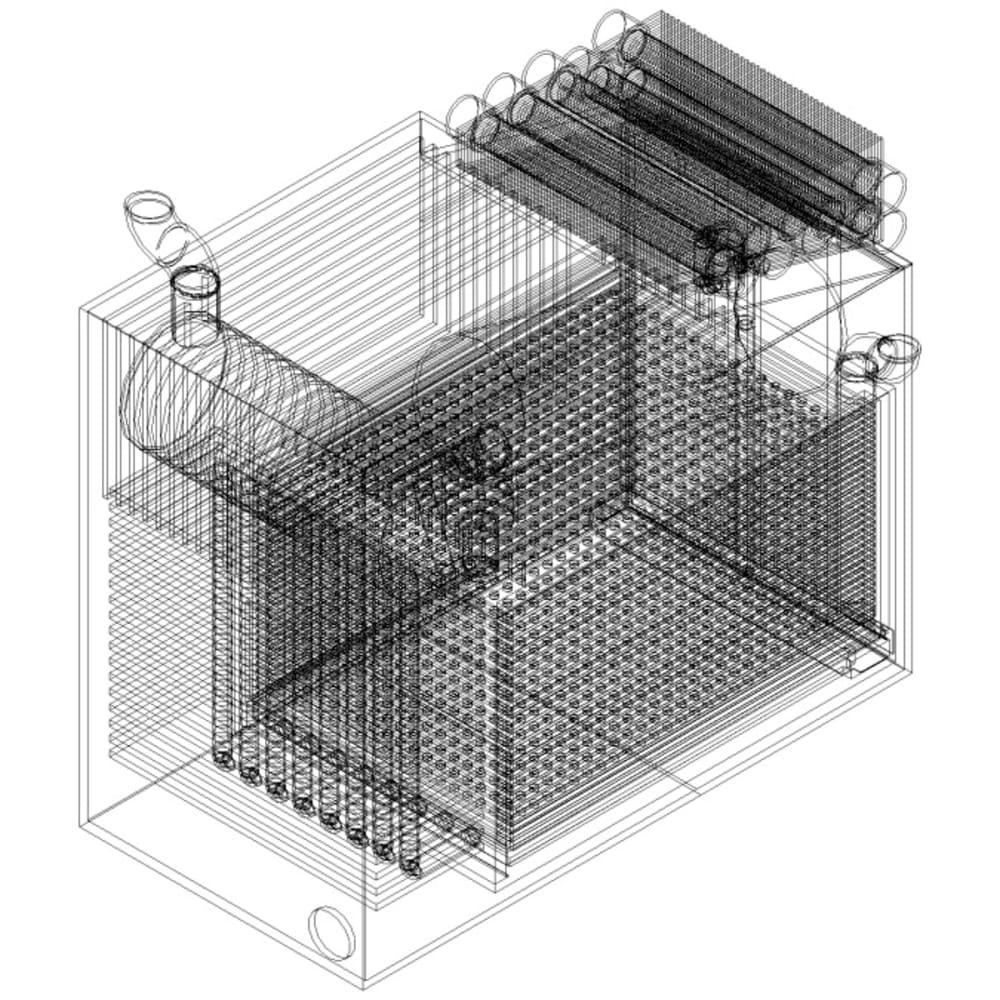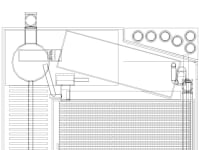The Thermo-Electric-Converter employs a thermally motivated electro-chemical reaction to cause electrical current.
The system works by thermally decomposing a certain solution (Chemical X), from liquid into 3 distinct gases. Upon the condensation of one gas, one of the remainder two gases is dissolved into the condensate (Solution A), allowing the remaining gas (Gas Z) to be separated and stored, for use later. Likewise Solution A can be stored in a reservoir.
To harness electrical current the Thermo-Electric-Converter (TEC) employs the exothermic recombination of Solution A and Gas Z to reform Chemical X, upon this reaction the chemical potential stored energy in the bonds can be observed as current across an anode and cathode. Upon recombination large pressure differentials are also observed, making this technology suitable for additional mechanical applications.
The TEC show potential for solar energy applications as well as for waste heat recovery in roads or industrial processes. The major advantage for TEC is that no external (lead acid /other rechargeables) batteries are required to store electrical energy, since the electrical energy is stored in the products of thermal decomposition of Chemical X, effectively meaning that TEC has a lower environmental impact than conventional PV Solar Cells. .
TEC is made from inexpensive electroplated sheetmetal and piping, and uses existing solar thermal water heating technology to heat the Chemical X solution. Additionally the solution of Chemical X is very inexpensive when compared with existing PV materials, which may mean that affordable solar energy is possible for the masses. The working principal Thermo-Electric-Converter chemical engine can be applied to recover heat to elecricity in many different instances, specifically where temperatures are between 30-110 degrees Celsius, the ideal operating temperature of a TEC. Chemical X is non toxic and does not contain any heavy metals
The output of a TEC is between 0.5V and 0.7V depending on the makeup of the housing and concentration of Chemical X. The the current density is dependent on the rate of flow and the design considerations of an individual TEC implementation.
In summary a Thermo-Electric-Converter employs a endothermic/exothermic thermally motivated cyclic electrochemical reaction to cause electrical current within low operational temperature ranges, typical of solar thermal or waste heat.
Like this entry?
-
About the Entrant
- Name:Chris Morton
- Type of entry:individual
- Software used for this entry:TurboCAD
- Patent status:none





